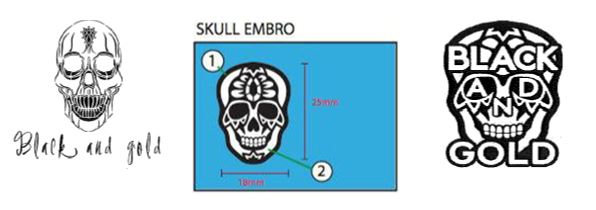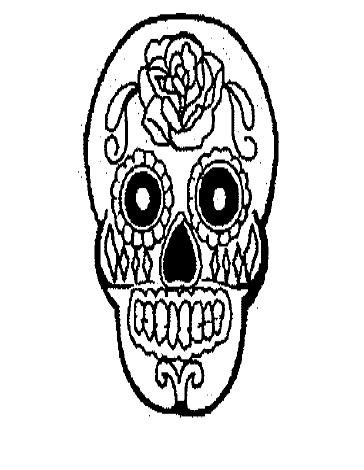Recently, the president of the Enterprise Court of Antwerp (Belgium) (the Court) decided on a case involving two Belgian clothing brands, Black & Gold and Suspicious Antwerp, on the use of skull devices in relation to their clothing line.
The facts
Both the claimant, Black & Gold (B&G), as well as the defendant, SSPCS Group (Suspicious Antwerp) (Suspicious Antwerp), sell clothes and accessories aimed at a young audience.
B&G uses the following registered Benelux figurative trade marks in relation to its clothing line (B&G trade marks):

The B&G trade marks are held by B&G's managing director and B&G claims to hold a license to these trade marks.
Suspicious Antwerp uses the following registered Benelux figurative trade mark in relation to its clothing line (challenged trade mark):

On the 18 October 2019, B&G filed accelerated proceedings on the merits against Suspicious Antwerp to obtain an injunction to prevent the use by the latter of the challenged trade mark.
B&G argued that the use of the challenged trademark:
- infringes its trade mark rights under article 2.20.2. b) and d) of the Benelux Convention on Intellectual Property (BCIP)
- infringes its copyright under article XI.165 Belgian Code of Economic Law (CEL)
- results in unfair market practices prohibited under article VI.104 CEL, and
- constitutes misleading advertising prohibited under article VI.97 CEL.
Procedural issues
In its decision, the Court first addressed two procedural issues:
- The admissibility of the claim and, in particular, the extent to which a claimant must demonstrate that, as a licensor, they are entitled to initiate the infringement proceedings. In this respect, article 2.32, 4 of BCPI provides that a licensee may only initiate proceedings with the permission of the trade mark holder. Here, the Court considered that an email from the holder to the lawyer of the licensee confirming such permission is enough to be the required permission as well as the existence of the licence.
- The possibility to claim for the cancellation of a trade mark in the context of accelerated proceedings on the merits. The Court ruled that in the context of these accelerated proceedings, it is not competent to decide on cancellation claims if the trade mark holder is not present in the proceedings.
Reasoning on the merits
The trade mark issues
On article 2.20, 1., b BCIP – which relates to the use of similar signs for similar goods and services – the Court first underlined that the perception of the average consumer plays a key role in the assessment of the likelihood of confusion, and that the average consumer remembers the trade mark as a whole and does not consider individual elements.
As a result, the Court pointed out that the B&G trade marks and the challenged trade mark have only one element in common: the skull device. The Court then compared the trade marks and came to the following conclusions:
- In relation to the Black and Gold mark, the Court found that the challenged trade mark has an entirely different style. It ruled that the skull is depicted in a much more realistic manner, the teeth are prominently present and sharper than normal (resulting in a "predator effect"), the eyes are empty, and the skull is not decorated (except for the diamonds depicted on the forehead). Importantly, the trade mark is characterised by a verbal component, the words "Black and Gold" under the skull. According to the Court, these elements result in a completely different overall impression, minimising the likelihood of the average consumer confusing the two marks.
- Regarding the Skull Embro mark, the Court refused to take into account the fact that B&G accidentally registered the sign with a blue background and technical references, and stated that it is the trade mark as registered that has to be assessed, without interpretation or correction. The Court found that the blue background, as well as the technical references, are not just details that the average consumer will ignore and therefore there is no likelihood of confusion.
- Where the Sion 1 mark is concerned, the Court pointed out that both signs clearly relate to the Dia de los Muertos-style, but noted that the skull of the Sion 1 mark is largely covered with the words "Black & Gold", which in the Court's opinion removes any likelihood of confusion.
The copyright and unfair market practice issues
On the copyright infringement claim, the Court stated that to establish the originality of a work it was insufficient for the claimant to show that there was a freedom of choice in creating the work. The claimant should also show that the author had actually used such freedom.
Here, B&G was simply stating that it was obvious that the authors of the signs had been creative. The Court ruled that this was insufficient, especially where the work finds its inspiration in a particular style originating from a cultural background. The claimant had to show in detail how the work departs from the reference framework. As this was not shown, the Court decided that the claimant could not invoke copyright protection for its works. Therefore, the Court did not have to assess the alleged copyright infringement.
Finally, on the unfair market practice issue, the Court stated that a simple copy is not enough to find an unfair market practice. It held that the claimant did not provide any evidence of specific circumstances that would indicate otherwise, and this claim was thus rejected.
Ultimately, it's clear that the threshold to obtain an injunction based on a logo which refers to a known style is quite high.




